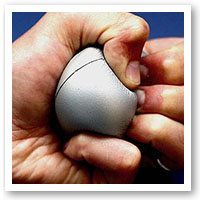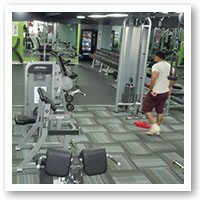Stress and your body, part 1.
 Stress is a term commonly used everyday, it is usually considered a negative concept that has some impact on one’s mental or physical wellbeing, but it can be either the cause or the effect.
Stress is a term commonly used everyday, it is usually considered a negative concept that has some impact on one’s mental or physical wellbeing, but it can be either the cause or the effect.
In nature most processes strive to maintain equilibrium, a steady state of balance, this includes our body on a physical level (our bones and muscles) as well as a physiological level (our organ systems). Environmental factors, internal or external stimuli, continually disrupt this balance, and these factors can be interpreted as stress.
As a chiropractor I am constantly dealing with and correcting the effects of physical stress. These physical stresses include falls and bumps, lifting or carrying heavy loads, prolonged periods of time in poor chairs, unsupportive mattresses or bad shoes, sustained posture, repetitive work or changes in our body for which it must compensate such as pregnancy or a broken bone in the foot, or knee surgery. On a physical level it is often clear to see how these stresses impact us and our wellbeing.
What is not always easy to see is how Emotional stresses impact our body and our wellbeing. I estimate that close to 75% of problems I see in clinic are due either directly or indirectly to emotional stress, but when I say that, people often can’t understand how emotional stress can affect us physically. It can be easier to understand when you consider situations of extreme stress, such as if your life were in danger.
In such a situation you would be feeling alot of emotions such as fear and panic, but your body would also be reacting, in a way that is known as a fight or flight reaction. This means that your body is getting prepared to fight or to flee. There are several things that happen but probably the most obvious sign would be that your heart would begin racing, this would result in you sweating, your body will produce adrenaline,which would make you feel buzzy or nervy. Your pupils will dilate, your blood will be directed to areas of your body that are important for fighting or fleeing (such as your muscles, your lungs and your brain) and away from areas that are not needed for the moment (such as your digestive organs). So you can see that emotions go hand in hand with physical changes.
Thankfully, it is not that common for us to be in a situation that is life threatening, but our modern lifestyles do entail alot of stress, and our bodies are constantly reacting to this stress in many ways, at a low level. These reactions will impact on our bodies in a physical way. Stress and your Body Part 2 will detail signs and symptoms your body may show in response to common low level daily stresses.

 Health Benefits of Exercise.
Health Benefits of Exercise. Types of exercise.
Types of exercise. Stretching is a very effective and important activity that has a number of known key benefits for all. These benefits include improved flexibility, a decrease in the likelihood of injury and muscle soreness, and an enhancement in physical performance.
Stretching is a very effective and important activity that has a number of known key benefits for all. These benefits include improved flexibility, a decrease in the likelihood of injury and muscle soreness, and an enhancement in physical performance.